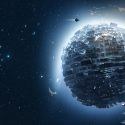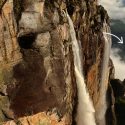Jupiter may be the biggest planet in the Solar System, but its days are numbered. Because today, we’re using Earth’s biggest, baddest bombs to blow the gas giant into oblivion. How many nukes would you need to do the job? What obstacles would these rocket-bound bombs encounter on the way? And would one nuclear explosion ignite the entire planet?
Nuclear weapons are so powerful that even the low-yield versions, like those dropped on Japan by the U.S. in World War II, have the explosive equivalent of 15-20 kilotons of dynamite each. What makes them so volatile is that they harness the intense energy-releasing power of nuclear fission or fusion. These are the same processes that happen in our very own Sun.
So be careful when moving these things out to Jupiter. One false move and you could be incinerated by a fireball as hot as the center of the Sun. In order to blow Jupiter to bits, one single bomb wouldn’t necessarily be up for the task. Good thing for this scenario there are a lot of nuclear weapons on Earth. Maybe the safest plan would be getting them all off our planet anyway.
Given the top-secret nature of military activities, it’s hard to know the exact number. Estimates put the global arsenal at about 12,700, with the U.S. and Russia battling for the top spot with 5,500 to 6,000 weapons each. Well, there’s no use in delaying. Let’s get these rockets off Earth as fast as possible.
The distance between Earth and Jupiter fluctuates from about 590 million km (365 million mi) to 970 million km (600 million mi). In the past, missions like the Galileo space probe took nearly five years to make this journey to the gas giant. Our rockets wouldn’t take this long. Galileo had to be slow enough to enter Jupiter’s orbit. We’d just need to hit the planet head-on.
So you’d only be looking at between 550 and 650 days to get the job done. You shouldn’t be too reckless and speedy, though. You don’t want to nuke something else by accident. Bypassing the Moon and Mars would be easy enough, but getting safely through the asteroid belt would be like navigating a minefield.
There are millions of asteroids riddled between Mars and Jupiter. And while the average distance between them is a not-so-worrisome 966,000 km (600,000 mi), sometimes it can still get a little cramped in there. Jupiter is partly to blame for this. The planet’s massive gravitational influence causes many of these to group into clusters known as families.
Carelessly navigating through one, like the Flora family, and you’d better hope none of our rockets collide with any of its 400 asteroids. For the best chances of success, you should aim to transport your rockets through the Kirkwood gaps. These are nearly asteroid-free regions in the belt. Because you’d hate to see all of our planet’s nukes detonate themselves in a blinding chain reaction before reaching our target.
As the first of our bombs exploded on Jupiter, you’d see bright flashes back here on Earth. Just like when the Shoemaker-Levy 9 comet slammed into Jupiter in 1994. But that only released 5% as much energy as the Tsar Bomba, the largest bomb ever created. So with thousands of our nuclear bombs, Jupiter’s days would have to be numbered right? Well, not exactly.
Even though our nukes could produce an explosion hotter than the Sun, this wouldn’t cause all the hydrogen on Jupiter to ignite. It just isn’t dense enough to sustain nuclear fusion. Even if every bomb were detonated, Jupiter wouldn’t blow up completely either. In order to do that, we’d need to unleash as much energy as the Sun releases over 160 years, all at once.
And for that highly energetic result, about one billion billion nukes would be required. Somewhat more than the 12,700 in our arsenal. To build that many bombs, you’d need a combined mass of material that would be almost twice that of the largest moon in the Solar System, Jupiter’s Ganymede. No small feat, since it’s bigger than Pluto and Mercury.
Well, that was pretty anticlimactic. Maybe you’d be better off seeing what could happen by taking things to the extreme here on Earth. Like dropping a nuke into the deepest part of the ocean.
Sources
- “Jupiter’s Atmosphere & The Great Red Spot”. Nola Taylor Tillman. 2018. space.com.
- “How Do Nuclear Weapons Work?”. 2016. ucsusa.org.
- “The Sun and Nuclear Fusion”. 2022. wwu.edu.
- “Status Of World Nuclear Forces”. 2022. fas.org.
- “Could We Light Jupiter Into A Star With A 500 Megaton Nuke?”. 2020. spaceaustralia.com.au.



























